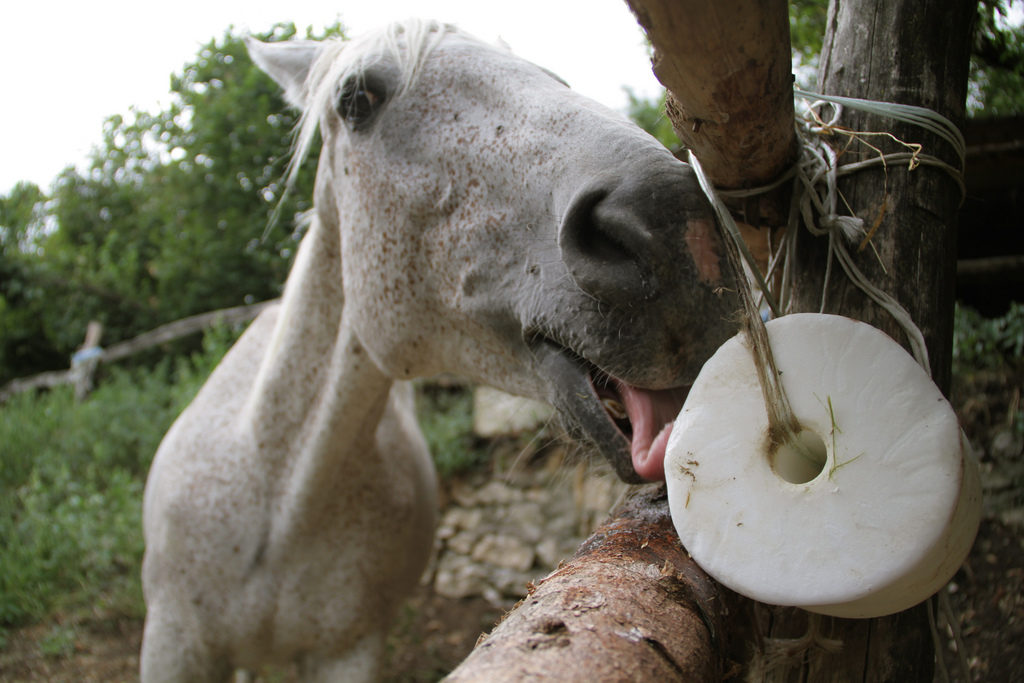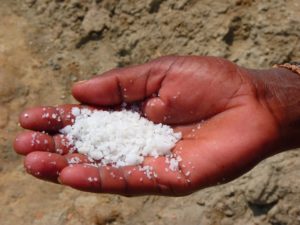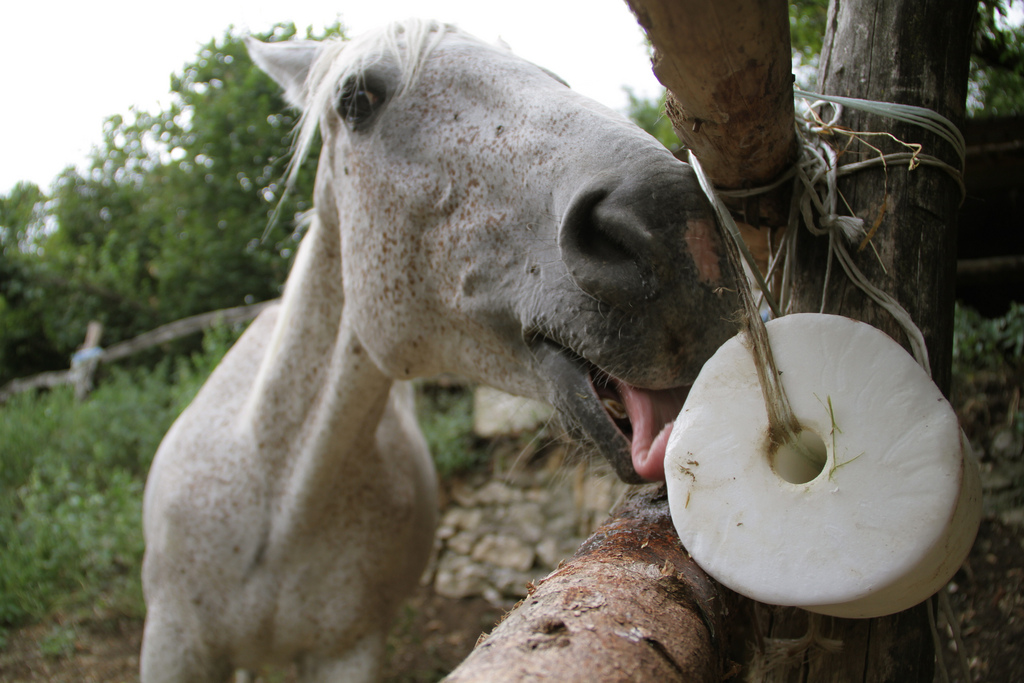Make salt a higher priority than electrolytes
By Juliet M. Getty, Ph.D.
 Your horse sweats more during the summer, making electrolyte supplementation worth considering. But electrolytes alone will not protect against dehydration. Your horse needs to have enough sodium (salt). One ounce per day (two tablespoons) is adequate for maintenance during cool months, but hot, humid weather calls for at least two ounces per day, and more if your horse is in work of any kind.
Your horse sweats more during the summer, making electrolyte supplementation worth considering. But electrolytes alone will not protect against dehydration. Your horse needs to have enough sodium (salt). One ounce per day (two tablespoons) is adequate for maintenance during cool months, but hot, humid weather calls for at least two ounces per day, and more if your horse is in work of any kind.
 One way to accomplish this: provide a plain, white salt block, Redmond salt rock, or Himalayan salt rock in close proximity. But make sure your horse licks it; many horses do not, due to tiny scratches that form on the tongue. Even better is to offer coarsely granulated salt free choice by pouring some in a small bucket. You can also add salt to each meal. Iodized table salt and Redmond and Himalayan rocks offer a small amount of iodine. Take this into consideration if your horse already receives iodine from another source. Total iodine intake should not exceed 5 mg per day.
One way to accomplish this: provide a plain, white salt block, Redmond salt rock, or Himalayan salt rock in close proximity. But make sure your horse licks it; many horses do not, due to tiny scratches that form on the tongue. Even better is to offer coarsely granulated salt free choice by pouring some in a small bucket. You can also add salt to each meal. Iodized table salt and Redmond and Himalayan rocks offer a small amount of iodine. Take this into consideration if your horse already receives iodine from another source. Total iodine intake should not exceed 5 mg per day.
Be aware that electrolyte supplements should be given only to a horse that is already in good sodium balance. They are designed to replace what is lost from perspiration and should contain at least 13 grams of chloride, 6 grams of sodium, and 5 grams of potassium per dose. If your horse works more than two hours at a time, provide a dose of electrolytes after exercise by adding it to a gallon of water, top-dressing a feed, or offered via syringe. And always, be sure to keep fresh, clean water nearby.

Juliet M. Getty, Ph.D. is an independent equine nutritionist with a wide U.S. and international following. Her research-based approach optimizes equine health by aligning physiology and instincts with correct feeding and nutrition practices. Dr. Getty’s goal is to empower the horseperson with the confidence and knowledge to provide the best nutrition for his or her horse’s needs. Learn more at www.gettyequinenutrition.com.








